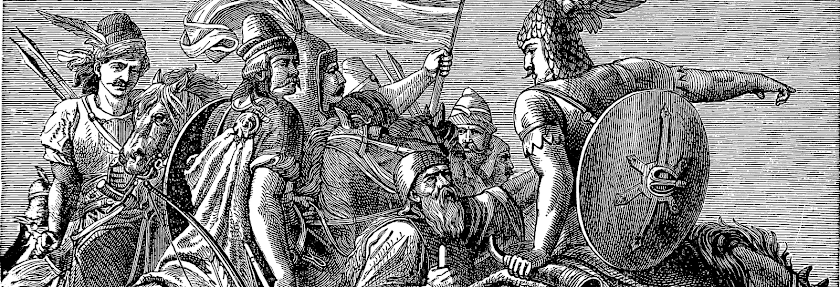Against the Wicked City had a good post on
the passage of time in D&D, which ticked a number of my boxes, including Pendragon,
expeditions with a basecamp, and change over long periods of time (I suppose RuneQuest has this model by default too). It has me thinking of a maybe-sane structure for running wilderness in semi-ACKS.
Cut the long-running campaign into seasons. The players travel to a
microsandbox (6x6 hexes maybe?) at the beginning of a season. The microsandbox has a basecamp, garrison, fishing village, or other small, limited market. The players adventure in the microsandbox for
three or four sessions (hence the three-shot), probably some combination of exploring to find dungeons and then working on those dungeons. At the end of that "adventuring season", the microsandbox closes for the rest of the year (monsoons, harsh winter, harsh summer in desert, annual wildfires, ghoul season, whatever), and the PCs return to civilization proper, where they can restock from an effectively-unlimited market, work on long-term projects, &c. This also gives the campaign a natural point for re-evaluation, player feedback, and correcting issues (in the design of the region (too big? too small? not enough loot? not enough dungeons? couldn't find dungeons?), party composition, players with 14 AC, discontent due to boredom or expectation mismatch...). Players decide if they want to return to that region again next adventuring season (maybe slightly expanded), or to a new one. DM restocks region (with six to nine months of game time, a lot can change) or builds a new one.
Has some nice properties. Incremental development approach for the DM with limited initial investment (provides nice opportunity to iterate on mapping techniques), explicit player-feedback cycle, ability to change theme / setting dramatically without straining the structure, makes use of market limits in the place where they make sense without making them a constant pain, provides a natural place to slot in replacement domain-type systems (the "resting in civilization" phase), might ease logistics in play compared to long-distance wilderness adventures (in a 6x6 sandbox, nothing is more than six hexes away from anything else...).
Some other interesting angles and possibilities:
- Transport costs to and from regions, at a higher level of abstraction than the ones in ACKS' campaign chapter. "5kgp to charter a ship to the Isle of Dread, able to carry up to 10 characters plus gear (characters with Seafaring ride free), 1d3 sea random encounters in transit, returning to pick you up at the end of the season". Safer regions are probably closer and less expensive to travel to and from, lower risk. Also a reasonable in-game-world way to impose party-size limits (or at least create costs - you could hire another ship to bring another 10 characters if you wanted).
- Exotic trade goods as treasure: might work better under this structure. You capture (or gather) stuff in the microsandbox, and bring it back to civilization with you at the end of the season, where you can sell it at a mark-up for being "from distant lands". Maybe abstract away the whole "rolling for sale price" too, because you have six months sitting in civilization and can presumably get a fair one.
- This also provides a nice lump sum of income+XP at the end of the season that might mechanically make it a likely place to level, which makes sense structurally / narratively in terms of "home, time to train and reflect on experiences".
- Domains - possibly worth splitting into two sets of mechanics. Domains back in civilization (fiefs?) probably operate more like Pendragon's; low/no growth, passive income with a roll once per season. Clearing and conquering wilderness out in the microsandboxes would work more like ACKS' defaults, if people cared to do it.
- On the other hand, passive income is dangerous in ACKS, because it provides XP and therefore can lead to level divergence instead of convergence. Honestly this might be reason enough to ditch XP for domain / campaign activities entirely.
- Organizational interests - one idea I liked from Pathfinder Society is the secret societies, each of which provides extra objectives during adventures. Given a set of organizations back in civilization, each probably has some set of interests in the microsandbox (some of which may be mutually exclusive), which PC members might accomplish. If you're headed to the desert, the mage's guild will pay high prices for the Spice, there's a branch of the assassin's guild that has gone rogue and needs cleaned up, the thieves' guild boss has a map to the Cave of Jeweled Eggs but wants a cut of any that you bring back, the imperial legion wants an up-to-date map of the oases in the region for logistical planning, and the church would like to recover the Nose of Saint Omar, which is lost but believed to be held by infidels. So those seed the region with adventure hooks if the PCs are members, and not all of them are probably going to be completed within the season (after which they refresh / evolve, as the situation in the region changes). Completion gives rewards, which might include eg status, civilized fiefs, end-of-season cash and XP, magic items, monopoly on particular goods, troops, ... ? And there is some gameable choice and allocation of limited resources, given partial information both about the objectives and the rewards for completion.
- For a more civilization-politics focused game, would certainly be possible to do with individuals too; the Duke of Wheresuch has an interest in these things, the Earl of Therewith in these others... But something I have found is that generally modern players are more comfortable with bureaucratic organizations than personal feudalism.
- Limited access to new / weird races and classes - the market in the microsandbox is small, but what henchmen there are may be of races and classes not available back in civilization (or in other microsandboxes). Also true of friendly / recruitable NPCs.
